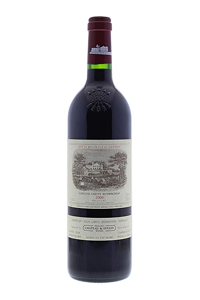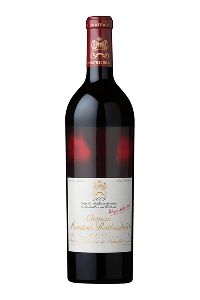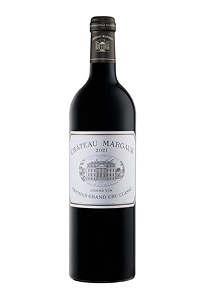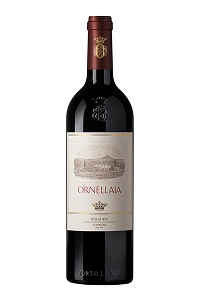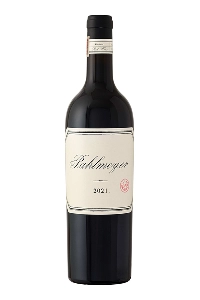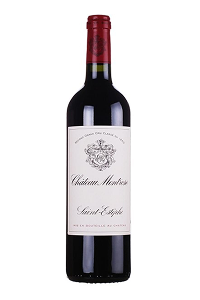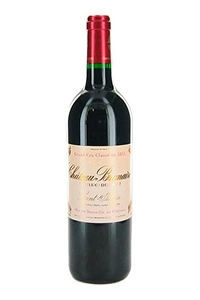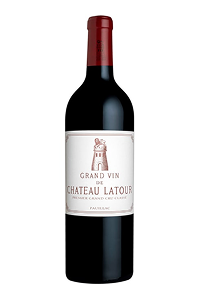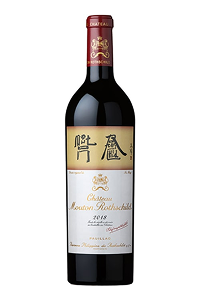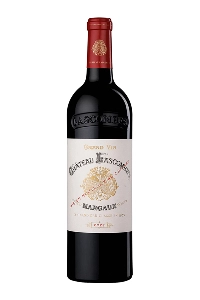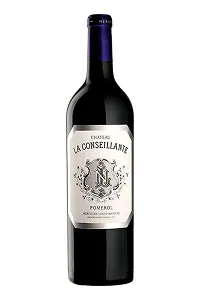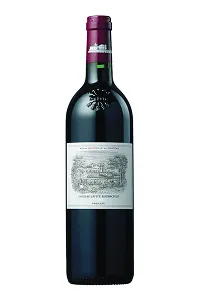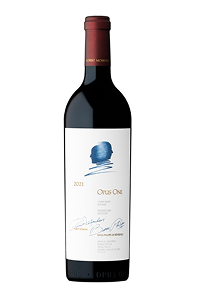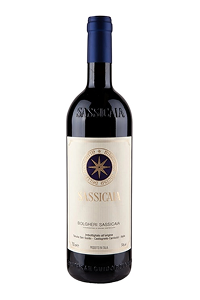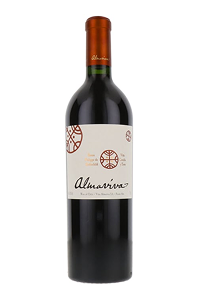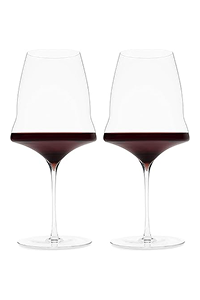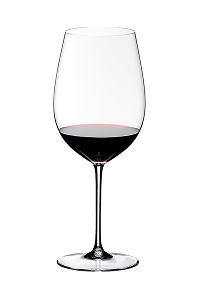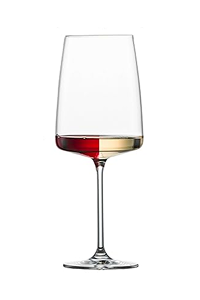Bordeaux wine to buy in 2025
Bordeaux red wine embodies centuries of tradition and the richness of diverse terroirs. This guide takes you inside the best Bordeaux wine releases of the year, spotlighting investment worthy bottles along with advice on how to enjoy and pair them with elegance.
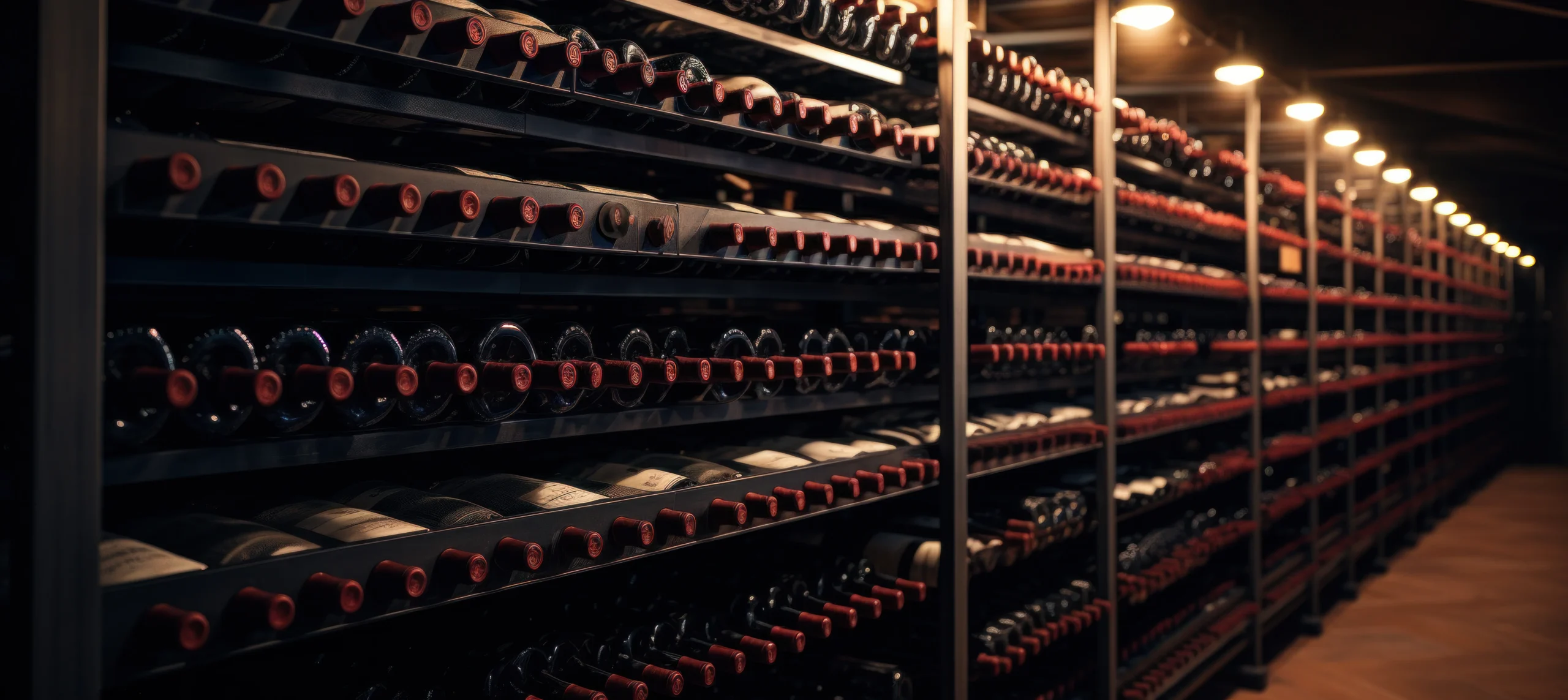
By
Last updated:
Table of Contents
10 Highly rated Bordeaux red wines for this festive season
Chateau Lafite Rothschild – 2000
France
Chateau Mouton Rothschild – 2009
France
Chateau Margaux – 2021
France
Dominus Estate – 2015
California
Ornellaia – Ornellaia – 2021
Italy
Napa Valley Proprietary Red – Pahlmeyer 2021
California
Saint- Estèphe – Château Montrose – 2006
France
Saint-Julien – Château Branaire-Ducru 2000
France
Napanook Vineyard – Dominus Estate 2018
California
Margaux – Château Brane-Cantenac 2000
France
Beyond immediate allure, these highly rated Bordeaux red wines offer remarkable aging potential, promising to evolve in complexity and cellar value over time. They are also perfect as thoughtful gifts for business partners, family or newlyweds, leaving a lasting impression that reflects refinement and generosity.
Bordeaux red wine at a glance
| Bordeaux Red Wine | Details |
|---|---|
| Grape Variety | Common: Cabernet Sauvignon, Cabernet Franc, Merlot; rare: Petit Verdot, Malbec, Carménère |
| Origin | Bordeaux (France) |
| Serving Temperature | 60° to 65°F |
| Decanting | 1 to 2 hours for younger wines, not more than 1 hour for aged vintages (needed only to separate the sediment) |
| Aging Potential | 5 to 30+ years |
| Flavor Profile | Blackcurrant, plum, cedar, tobacco, earth, spice, dark berries |
| Structure | Medium to full bodied, firm tannins, balanced acidity |
| Alcohol Content | 12.5% to 14.5% |
| Ideal Glass | Large Bordeaux glass |
| Food Pairing | Red meats, lamb, game, aged cheeses, casseroles, grilled ribeye |
| Top Communes | Médoc, Saint-Émilion, Pauillac, Pomerol |
| Notable Producers | Château Margaux, Château Lafite Rothschild, Château Latour, Château Petrus |
Bordeaux red wines are mostly defined by blends of Cabernet Sauvignon, Merlot and Cabernet Franc in varying percentages but grapes of Petit Verdot, Malbec and Carménère are also permitted, although used in a minority of modern productions. Typically served at 60/65°F in large Bordeaux glasses they show medium to full body, firm tannins and flavors of blackcurrant, plum, cedar, tobacco and spice amongst others. Bordeaux wine’s balance of structure, longevity and versatility is what sets it as “the” international benchmark for fine wine.
What are the best Bordeaux red wine brands?
Bordeaux wine “brands” are in fact châteaux = estates that have cultivated vines and crafted wine for centuries. These producers are guardians of the most refined winemaking, creating some of the world’s most prestigious bottles through techniques and blends handed down across generations. Let’s take a closer look at each of the legendary estates producing the best Bordeaux red wines.
Château Lafite Rothschild in Pauillac stands as one of the most iconic houses. Its origins date back to the 17th century but it was in the 19th century, under the Rothschild family, that Lafite rose to global prominence. The wine style of the estate is defined by Cabernet Sauvignon’s dominance, which results in aristocratic and elegant wines with an extraordinary capacity to age. Here is our Bordeaux red wine recommendation from this powerhouse.
Chateau Lafite Rothschild – France
Château Latour, also in Pauillac, traces its history to the 14th century when a fortress tower gave the name to the estate. Known for unshakable consistency and considered a cornerstone amongst collectors, its wines are mainly Cabernet driven resulting in powerful, precise reds with great complexity as they mature. Few bottles are spoken of with as much reverence as the 1961 Latour, considered one of the greatest Bordeaux wines of the 20th century. Below is a recommendation of Bordeaux red wine to try from Château Latour.
Chateau Latour 2015 – France
Château Margaux, often called the “Versailles of the Médoc” its winemaking dates back to the 12th century. Unlike the firm structure of Pauillac’s wines, Margaux is celebrated for its elegance, perfume and silky textures. Collectors hold vintages like 1990 and 2000 in particularly high regard as they represent the château’s signature harmony between delicacy and depth. Our recommendation from Chateau Margaux captures its aristocratic grace.
Château Margaux 2001 – France
Château Haut-Brion in Pessac-Léognan, is the only estate outside the Médoc to be included in the original 1855 First Growth classification. Its history stretches back to the early 16th century and it is famed for producing deeply structured Bordeaux reds with smoky, earthy notes often described as “gravelly elegance.” Our Bordeaux red wine recommendation from this estate reflects both its grandeur and collectible appeal.
Château Haut-Brion 2016 – France
Château Mouton Rothschild in Pauillac was initially left out of the 1855 First Growth classification but then famously elevated in 1973 after decades of releasing excellent bottles on the market. It is the only estate ever promoted within the original Bordeaux ranking system. Mouton is celebrated for its bold and opulent wines dominated by Cabernet Sauvignon in the blends. Its iconic wine labels feature artwork from renowned painters such as Picasso, Chagall and Warhol. Our Bordeaux red recommendation from this estate represents its signature power and refinement.
Chateau Mouton Rothscild 2018 – France
What is red Bordeaux wine and how is it made?
Red Bordeaux is a wine only produced within the Bordeaux region of southwest France. Legally speaking, only wines coming from such region can carry the “Bordeaux” name on the label, a protection enforced under France’s strict AOC (Appellation d’Origine Contrôlée) system. The AOC’s regulations set stringent and mandatory rules for Bordeaux wines which need to be applied in the vineyards, in blending (only certain grapes are permitted), in winemaking methods and quality standards.
Yet, the blending techniques of Bordeaux have expanded beyond France: despite not being able to use the Bordeaux name, Italian and New World winemakers have started using the same grapes (mainly Merlot, Cabernet Sauvignon and Cabernet Franc) to craft Bordeaux style wines that receive increasing international acclaim and challenge traditional styles.
Let’s see in detail how red Bordeaux wines are made:
- Grapes: Bordeaux red blends mostly consist of Merlot, Cabernet Sauvignon and Cabernet Franc, sometimes inclduing smaller amounts of Petit Verdot, Malbec and rarely (but still permitted) Carménère.
- Terroir: although coming from the same Bordeaux region, the wines have different characters according to the parcels where the grapes originate from. The Bordeaux Left Bank has gravel rich soils that are more favorable to Cabernet Sauvignon, hence the preference of local winemakers to emphasize this grape (Médoc and Graves). The Right Bank instead is characterized by clay and limestone soils that favor Merlot and Cabernet Franc, resulting in softer and rounder wines (Saint-Emilion, Pomerol).
- Harvesting: grapes are often picked by hand (especially in small and steeper vineyard parcels) at peak maturity, they’re sorted to remove any rotten or unwanted parts and then destemmed to remove any residual bitterness.
- Crushing and maceration: grapes are carefully crushed and the must (consisting in juice, skins and seeds) is left to macerate in temperature controlled stainless steel or concrete tanks to avoid release aroma, tannins and color.
- Alcoholic fermentation: macerating must is left to ferment in the tanks anywhere from a week to a month depending on the vintage and style of wine the winemaker wishes to achieve. The fermentation temperature is carefully controlled and natural yeasts present in the sugars or added by the winemakers begins to convert the grape sugars into alcoholic compounds.
- Cap management: during fermentation, winemakers may choose to pump the juice resting on the bottom of the tank over the cap of skins floating on the top to enhance the extraction of flavors and color (remontage).
- Free run vs pressed: after maceration, free running wine is drained while the residues are pressed separately and kept in different barrels. Pressed wine is then evaluated based on color and tannins and blended back in at different doses to add structure and depth to the wine. Pressed juice is more tannic than free run.
- Malolactic fermentation (MFL): soon after the alcoholic fermentation the wine is subjected to a secondary fermentation where sharper malic acid is transformed into softer lactic acid to stabilize and round the aromas of the wine. This process lasts on average 12 to 15 days.
- Blending / assemblage: blending practices vary by château. Some estates combine different grape varieties and vineyard parcels before barrel aging while others blend later. At Château Lafite-Rothschild for instance, the wine spends about three months in barrel before blending. Because every parcel, grape variety and fermented lot is vinified separately, a Grand Cru estate might have dozens of individual lots to pick from when selecting the final blend. Winemakers taste each lot to blend according to the “house style” while respecting also the character of the vintage: some years might require adding more Merlot for softness while some other might require more Cabernet Sauvignon for structure and longevity.
- Aging: most red Bordeaux wines age in French oak barrels for 12 to 24 months. This phase is called élevage, which literally means “raising” the wine, like the raising of a child. Prestigious estates use a high new oak proportion (sometimes up to 90%) to shape style, structure and longevity of the wine.
- Bottling and release: once the blend is finalized and élevage complete the wine is finned (often by using egg white) and filtered (although some estates prefer little to no filtration to preserve body and aromatic intensity of the wines). To carry the Bordeaux AOC appellation the finished wine must meet the strict appellations standards set out for grapes, yield, alcohol content and other winemaking parameters. The wine is then bottled and released to begin another journey: further aging in bottles, sometimes for decades.
Each château develops its own blending philosophy and winemaking process, often considered a closely guarded secret passed down from generation to generation. These techniques evolve subtly with each vintage but mostly remain anchored in the family tradition and house style. This is why two neighboring estates working with the same grapes can produce wines of dramatically different wine personalities.
Primary and secondary red Bordeaux wine grapes
As we have seen, the accurate blending of lots produced from different Bordeaux wine grapes is essential to create the signature wines that define French winemaking on the world stage. Below are the main grape varieties used in Bordeaux red wines and a little about what each of them adds to the blends:
Bordeaux grapes variations
| Bordeaux Grapes | Left Bank (Médoc, Graves) |
Right Bank (Saint-Émilion, Pomerol) |
Contribution |
|---|---|---|---|
| Cabernet Sauvignon | Dominant (60 – 75% of blend) | Minor role (10–30%) | Structure, tannin, longevity |
| Merlot | Secondary (20 – 35%) | Dominant (60 – 80% of blend) | Softness, plush fruit, mid palate volume |
| Cabernet Franc | Supporting role (5 – 10%) | Key variety in some estates (10 – 40%) | Aromatic lift, finesse, floral/herbal notes |
| Petit Verdot | Used sparingly (1 – 5%) | Rare | Deep color, firm tannins, spice, violet |
| Malbec | Rare | Rare | Dark fruit, earthy tones, rustic charm |
| Carménère | Almost extinct | Almost extinct | Red fruit, herbal notes, complexity when present |
Types of Bordeaux wine and varietals
Trying the different types of Bordeaux wine gives you a better sense of how the region mixes tradition with a little creativity, showing that it’s not just stuck in the past but still surprising people century after century.
Reading the Bordeaux wine label: understanding classifications
Bordeaux wine labels can feel complex but they carry important clues about the wine’s quality, prestige and collectibility. The region’s first classification systems date back to the 19th century and although they’re divided into sub regions and remain benchmarks for collectors and drinkers today. Here’s what the main terms mean when you see them on a label:
Médoc & Graves (Bordeaux 1855 Classification)
- Premier Cru Classé (First Growth): is the very top tier of the region’s production. Only five estates hold this title: Château Lafite Rothschild, Château Latour, Château Margaux, Château Haut-Brion, and Château Mouton Rothschild. These are Bordeaux’s most prestigious wines with the highest prices and longest aging potential.
- Deuxième, Troisième, Quatrième, Cinquième Cru Classé (Second to Fifth Growths): the classification recognizes world class wines, divided into five tiers based on price and reputation. Despite being over 150 years old this system still carries weight today.
- Cru Bourgeois: is a designation mainly for Médoc châteaux not included in the 1855 Classification. It highlights quality, affordability and consistent standards.
- Cru Artisanal: is reserved for small, family run estates in Médoc, emphasizing artisanal and hands on production.
Saint-Émilion (first ranked in 1955 – updated every 10 years)
- Grand Cru Classé A: the absolute elite from the region, only famous names like Château Cheval Blanc and Château Ausone hold the name.
- Grand Cru Classé B: these are prestigious wines but slightly below the Class A.
- Grand Cru: not to be confused with “Grand Cru Classé,” this label simply indicates the wine meets slightly stricter AOC production standards within Saint-Émilion (lower yields, higher alcohol). Many producers use it but it does not guarantee the same prestige as the classified growths.
What influences Bordeaux red wine price?
Bordeaux red wines can cost a little or literally a lot meaning you can pick up something for $30 – $40 or splash out on a First Growth that goes well over $1,000. So why such a wide gap?
The price is driven by factors such as the prestige of the château, its ranking within Bordeaux’s classification system and the reputation of the vintage. Vineyards producing smaller quantities but better grapes drive prices higher while demand from collectors keeps Bordeaux among the world’s most traded fine wines.
1. Entry Level Bordeaux: Il Fauno di Arcantum 2021- Tenuta di Arceno – Italy ABV 15%
2. Mid Tier Bordeaux: Chateau Lascombes 2022 – France ABV 14%
3. Single Estate Bordeaux: Pomerol 2016 – Château La Conseillante – France ABV 13,1%
4. Prestige Collector Bottles: Pauillac – Château Lafite Rothschild 2017 – France ABV 13%
Looking for value? The table above provides information on Bordeaux wine costs, featuring insights from Bordeaux wine merchants, Bordeaux wine brands and our ratings.
Best red Bordeaux vintages
Bordeaux reds get a lot of attention from collectors, especially in outstanding vintages as these determine the aromas, the aging potential and price of collectible bottles.
The below Bordeaux wine vintage chart shows the “top years” which are basically those where the weather conditions were just perfect, the grapes ripened perfectly and the winemakers, in addition to being very skilled, got also lucky. Let’s see the best Bordeaux wine vintages year by year.
Bordeaux wine vintages by year
| Best Merlot Vintage | Vintage Characteristics |
|---|---|
| 2016 | Celebrated as a stellar vintage resulted in wines with refined profiles, fresh and structured. The Right Bank’s estates delivered particularly impressive reds. |
| 2010 | A “cornerstone” modern vintage marked by wines with brilliant depth, structure and pronounced aging potential. |
| 2009 | Highly praised on investment and quality grounds for rich, silky and globally collectible wines. Warm summer, long growing season, grapes got really ripe. Wines from this year tend to feel plush. |
| 2005 | Widely considered a benchmark vintage, it yielded powerful, balanced, and age worthy reds both in Left Bank and Right Bank estates. |
| 2000 | Iconic vintage, praised for ripeness, balance and remarkable consistency across all appellations. A cooler spring worried winemakers but then dry, sunny days came with very classic Bordeaux conditions. |
| 1995 | Strong vintage with ripe fruit, firm tannins and impressive aging capability, especially in the Médoc estates of the Left Bank. |
| 1990 | Ripe, balanced and elegant classic wines. A rainy spring and hot summer brought some challenges with ripening, but overall grapes reached nice balance. |
| 1989 | Warm weather yielded rich and concentrated Cabernet expressions (Pauillac) as well as Merlot driven wines (Pomerol). |
| 1986 | Dense and tannic wines that reward patience and aging. This was a tricky year with lots of rain early on and sun coming late. It produced concentrated grapes when carefully managed. |
| 1982 | Legendary vintage known for rich, complex and age worthy wines with almost perfect weather that helped grapes ripen fully. |
Top red Bordeaux blends from around the world
Although Bordeaux wine is associated with France and the most expensive and priced bottles coming from its châteaux, red Bordeaux blends have found remarkable expression in vineyards around the world. International winemakers have enthusiastically embraced Cabernet Sauvignon, Merlot and their companion grapes producing wines that reach complexities and intensity to rival French originals. Here’s how the most reputed international winemakers are interpreting red Bordeaux blends:
United States – California
California, particularly the Napa Valley, has become the leading voice of Bordeaux red blends outside France. Few names resonate more than Opus One, a groundbreaking collaboration between Robert Mondavi (visionary US winemaker) and Baron Philippe de Rothschild. The Dominus Estate, guided by Christian Moueix of Château Pétrus, expresses a more restrained and terroir driven vision. Other icons such as Joseph Phelps Insignia and Ridge Monte Bello often reached prices on par with Bordeaux First Growths.
Opus One 2021 – California
Tenuta San Guido Sassicaia 2021 – Italy
Chile
Chile’s most iconic Bordeaux style wine is Almaviva, a partnership between Château Mouton Rothschild and the local Concha y Toro. Chilean Bordeaux blends are powerful and balanced often marked by cassis, plum, graphite and a distinctive herbal lift reminiscent of eucalyptus.
Almaviva 2020 – Chile
Other New World winemakers have increasingly experimented with red Bordeaux blends, especially in South Africa and New Zealand adding fresh voices to the global conversation, proving that Bordeaux blends are no longer defined by geography alone.
Bordeaux reds serving temperature and tips
Serving Bordeaux reds the right way lets their complexity and elegance truly shine. Given the delicate and precious nature of these wines, the serving process, despite being simple, is almost a ritual. Here are our key tips for serving Bordeaux like a pro:
- Bordeaux serving temperature: Bordeaux reds show best between 60 and 65°F. If served too warm the alcohol will dominate while if served too cold the flavors will seem muted.
- Use a two step corkscrew and ease the cork slowly out of the bottle to avoid breaking it, especially if you are opening older vintages.
- Keep older bottles upright for a few hours before serving to let sediment settle. When pouring, stop before the last ounce to avoid cloudiness in the glass.
- Younger Bordeaux reds (under 10 years) benefit from 1 to 2 hours of decanting to soften tannins and release aromas. Older bottles should be decanted gently and briefly, mainly to separate sediment without overexposure to air, otherwise their aromas risk fading.
- Choose a large Bordeaux wine glass with a tall and wide bowl. This shape aerates the wine and directs complex flavors smoothly across the palate.
- Fill each glass only one third full. This leaves room for swirling, which releases Bordeaux reds’ signature notes of blackcurrant, cedar and spice.
- Pair with the right food to highlight red Bordeaux’s structure and depth.
Best Bordeaux wine pairing: the bold companion of fine dining
Bordeaux is a natural match for rich meat dishes but its depth and structure make it surprisingly versatile. The table below shows some of the best Bordeaux wine pairings you can enjoy with both everyday meals or Michelin star dishes.
| Food | Best Bordeaux Wine | Aged | Type & Structure |
|---|---|---|---|
| Grilled Lamb, Duck, Beef Steaks | Chateau Mouton Rothschild – 2009 | 5 to 10 years, ABV 13.5% | Full bodied, rich tannins, elegant complexity |
| Charcuterie, Pâté, Cured Sausage | Chateau Margaux – 2021 | 4 to 6 years, ABV 14.5% | Medium bodied, smooth tannins, fruity notes |
| Braised Meats, Roasts, Venison | Dominus Estate – 2015 | 6 to 12 years, ABV 13.5% | Full bodied, structured, firm tannins |
| Aged Cheese, Roquefort, Parmigiano Reggiano, Cheddar, Gouda | Saint-Julien – Château Branaire-Ducru 2000 | 5 to 12 years, ABV 13.5% | Full bodied, bold tannins, balanced acidity |
| Pasta, Risotto and Baked Casseroles | Margaux – Château Brane-Cantenac 2000 | 3 to 7 years – ABV 14% | Medium to full bodied, fruity, balanced acidity |
High end Bordeaux wine glasses and other accessories
Glassware is essential for experiencing Bordeaux wines at their fullest. Bordeaux reds are rich, full bodied, with firm tannins and aromas that need space to reveal their layers. The Bordeaux wine glass shape (tall bowl with a wider base and a tapered rim) reflects its aromas, allowing the wine to breathe, increasing oxygenation to soften tannins and open up complex flavors of blackcurrant, cassis, plum and wet earth.
Below are three examples of high end Bordeaux wine glasses conveniently available on Amazon, designed to enhance the depth of complex reds and add a refined touch to your table.
Josephinenhütte – JOSEPHINE N. 3 Red wine glasses – Set of 2
Riedel Sommeliers Bordeaux Grand Cru
ZWIESEL GLAS Sensa – Bordeaux red wine glasses – Set of 6
Burgundy vs Bordeaux wine
When talking about France’s big reds, it’s almost impossible not to compare Burgundy vs Bordeaux wine. Both are surely legendary but they couldn’t be more different in style, grapes and structure. Bordeaux reds are defined by the blends with resulting wines that emphasize power and age worthiness. Burgundy wins, on the other hand, focus almost exclusively on Pinot Noir for reds and Chardonnay for whites. Where Bordeaux expresses harmony through blending, Burgundy celebrates individuality.
Bordeaux wines are made for aging and showcase bold flavors of blackcurrant, plum, cedar, tobacco and spice; Burgundy wines instead are made for earlier consumption and lean toward elegance with notes of red berries, earth and floral aromatics.
Burgundy vs Bordeaux comparison table
| Feature | Bordeaux red wines | Burgundy wines |
|---|---|---|
| Main Grapes | Blending of different grapes: Cabernet Sauvignon, Merlot, Cabernet Franc | Single varietal wines: Pinot Noir for reds, Chardonnay for whites |
| Wine Style | Bold, structured and powerful, built for aging | Elegant, delicate and highly nuanced, for earlier consumption if compared to red Bordeaux |
| Flavor Profile | Blackcurrant, plum, cedar, tobacco and spice | Red berries, cherry, earth, truffle and floral notes |
| Aging Potential | 10 to 50+ years for top châteaux | 5 to 20+ years for top domaines |
| Investment Appeal | Global icons status for bottles from Lafite Rothschild, Margaux and Petrus | Rare and terroir focused from Domaine de la Romanée-Conti, Rousseau |
FAQs Best Bordeaux wine
What are the top 5 wines in Bordeaux?
The top 5 Bordeaux wines are usually the ones coming from the original chateaux/estates of Bordeaux (France): Château Lafite Rothschild, Château Margaux, Château Latour, Château Haut-Brion and Château Mouton Rothschild. These century old wineries produce some the most prestigious red wines in the world, consistently sold at record price at international auctions. Nevertheless, winemakers outside France (specifically from Italy, California and Chile) have been successfully experimenting with red Bordeaux blends, reaching remarkable results that rival original French bottles.
What are the best Bordeaux vintages?
The best Bordeaux vintages are generally recognized as 1982, 1990, 2000, 2005, 2009, 2010, 2015 and 2016. These years benefited from near-perfect weather conditions that allowed the grapes to fully ripen, resulting in wines with exceptional balance, rich complexity, and strong aging potential. These vintages are highly prized by collectors and critics alike and are often used as benchmarks for outstanding Bordeaux quality worldwide.
What are common Bordeaux wines?
Common Bordeaux wines are most often blends composed primarily of Merlot, Cabernet Sauvignon and Cabernet Franc grapes. These blends create a wide range of styles, from affordable everyday wines to highly prestigious, collectible bottles. Bordeaux wines typically showcase rich, ripe fruit flavors, balanced tannins and a firm structure.
What are the main Bordeaux red wine grapes?
The main red wine grapes in Bordeaux are Merlot, Cabernet Sauvignon, and Cabernet Franc. Merlot is the most planted, providing softness and ripe fruit notes. Cabernet Sauvignon adds tannic structure and depth, while Cabernet Franc brings aromatic complexity and finesse. Together, these grapes create the classic Bordeaux red blends celebrated worldwide for their balance and aging capacity.
Is Bordeaux wine produced only in France?
Yes, Bordeaux wine is exclusively produced in France, specifically in the Bordeaux region in the country’s southwest. This area is famous for its exceptional red wines, thanks to its unique climate, soil, and centuries-old winemaking traditions. Although similar Bordeaux style blends are made in places like California using the same grapes, only wines from Bordeaux can legally be called Bordeaux red wine.
How long can you keep a bottle of Bordeaux red wine open?
After opening, a bottle of Bordeaux red wine can typically remain fresh for 3 to 5 days if it is properly recorked and stored in a cool, dark place away from direct sunlight and heat. Using a vacuum pump or specialized wine preservation system can help extend the wine’s freshness by minimizing oxygen exposure, preserving the wine’s delicate aromas and overall quality for a longer period.
What are the 8 communes of red Bordeaux wines?
The 8 main communes producing red Bordeaux wine are Fronsac, Saint-Estèphe, Pauillac, Saint-Julien, Margaux, Pessac-Léognan, Saint-Émilion and Pomerol. Each commune produces distinctive wine styles with unique terroirs, soil types and microclimates, contributing significantly to the overall diversity, complexity and reputation of Bordeaux’s wine portfolio.
Should Bordeaux red wine be chilled?
Bordeaux red wine should ideally be served slightly chilled, around 60-65°F (16-18°C) to best highlight its complex aromas and layered flavors. Serving it too cold can dull its expressive character and mask subtleties while serving it too warm tends to exaggerate alcohol perception and tannins, which negatively impacts the wine’s overall balance and texture.
Is Bordeaux wine a white wine?
Bordeaux produces both white and red wines but it is predominantly famous for its rich, structured red blends. Bordeaux white wines are typically dry, crisp and fresh, made primarily from Sauvignon Blanc, Sémillon and Muscadelle grapes. Bordeaux whites generally receive less international recognition compared to the region’s highly celebrated red wines, although their quality is excellent.
Why is Bordeaux red wine so expensive?
Bordeaux red wine is so expensive because of its longstanding global reputation for exceptional quality. It also commands high prices due to limited production volumes from prestigious châteaux and strong demand among collectors worldwide. The intricate winemaking process, ability to age gracefully for decades and the historical significance attached to many Bordeaux estates all contribute to the elevated cost, especially for rare vintages and top tier wines.
Is Bordeaux wine sweet?
Most Bordeaux wines are dry but the region is also known for producing some exceptional sweet Bordeaux wine, particularly in the Sauternes and Barsac appellations. These sweet wines are made from grapes affected by noble rot (Botrytis cinerea),which concentrates sugars and flavors, resulting in luscious wines with honeyed notes that contrast with Bordeaux’s generally dry red and white wine styles.
Is Bordeaux red wine dry?
Yes, the majority of Bordeaux red wines are dry. Classic Bordeaux wines emphasize dryness alongside balanced acidity and firm tannins that contribute to their structure and aging potential. However, moving outside the red wines area, there are notable sweet Bordeaux exceptions, such as the sweet dessert wines from specific areas like Sauternes, which offer naturally sweet profiles crafted from botrytized grapes.
What is the Bordeaux red wine ABV?
The Bordeaux red wines’ ABV (the alcohol by volume) typically ranges from 12% to 14.5%, with red Bordeaux wines generally falling between 13% and 14%. This range reflects Bordeaux’s traditional focus on balanced, elegant wines with moderate alcohol levels suited to their classic profiles and food pairings.
